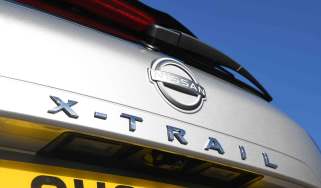Porsche Boxster (2004-2011) review
The second-generation Porsche Boxster is class benchmark for handling, performance and quality

Ever since the launch of the original in 1996 the Porsche Boxster has been the benchmark car in the roadster sector. The second generation continues to outclass rivals like the BMW Z4 and Mercedes SLK. With its mid-mounted flat-six engines handling and performance is unrivalled. The standard Boxster has a 2.7-litre, while the flagship S gets a 3.4-litre, both cars are cleaner, more fuel efficient than ever before, plus are lighter, faster and stiffer, than the previous model. A six-speed manual gearbox is standard but Porsche’s dual-clutch PDK transmission is a popular option.
Engines, performance and drive
The Porsche Boxster is quite simply one of the best handling and most engaging cars money can buy. The mid-mounted engine ensures a near perfect balance between front and rear grip. The electro-mechanical power steering is the same system found in the latest 911 and it’s the best we’ve ever tried. Feedback is a fraction less natural than mechanical systems but turn in is sharp and very accurate. There’s so much mechanical grip that the stability system is rarely activated and composure at speed is faultless. Through long corners it’s easy to tighten your line, while body control is excellent. Powerful brakes finish an accomplished dynamic set-up. Both models offer superb performance and record their fastest 0-60mph figures with the optional PDK gearbox.
MPG, CO2 and Running Costs
The entry point to Porsche ownership the Boxster costs less than £40,000 while the S demands a near £8,000 premium. Options are costly on both models but strong residuals are a big plus point. Running costs are helped by class leading efficiency - all cars get standard stop/start, while PDK equipped models get a coasting function. Emitting 15 per cent less CO2 than the last generation Boxster, combined economy for the standard car and the S is 36.7 and 35.3mpg respectively.
Interior, design and technology
With a more obvious stand-alone identity the latest Porsche Boxster is better looking and more sure of itself than ever before. Short overhangs, a longer wheelbase and a wider track give it taut proportions while the windscreen has shifted forward and been raked back at a steeper angle. In profile deep sculpted doors and large side vents hint at the 918-hybrid supercar, while big wheels (18 inches on the Boxster and 19 inches on the Boxster S) give the roadster a planted stance on the road. However, it’s at the rear that the snazziest details are found; here the automatic rear wing blends into the light clusters, which form part of the aerodynamic package, while the tightly folded hood sits neatly exposed behind the cockpit. The comfortable and upmarket cabin is similar in style to the bigger 911's.
Practicality, comfort and boot space
With a pair of luggage areas the Porsche Boxster is one of the most practical cars in its class. You get a deep 150-litre nose boot and a useful 130-litre rear luggage area. The cabin is spacious - there’s a pair of smart retractable cup holders, a decent sized glovebox and centre storage cubby. The taut fully electric roof folds in just nine seconds and sits neatly behind the cabin without effecting luggage space. It can be opened or closed at up to 31mph - while the glass rear window is heated and gives decent visibility.
Reliability and Safety
When it comes to active safety the Boxster’s near-faultless handling is its biggest asset. Grip levels are so high that the standard stability control is only troubled in extreme situations. The spoiler automatically rises at high speed to reduce rear end lift, while big tyres and a wide track keep a secure footprint on the road. All models get an electric parking brake as standard. If the worse should happen the rigidity of the open topped body is excellent - 40 per cent stiffer than the last generation, while side airbags are standard fit. Porsche scores highly in our Driver Power surveys so reliability should be a strong point.



